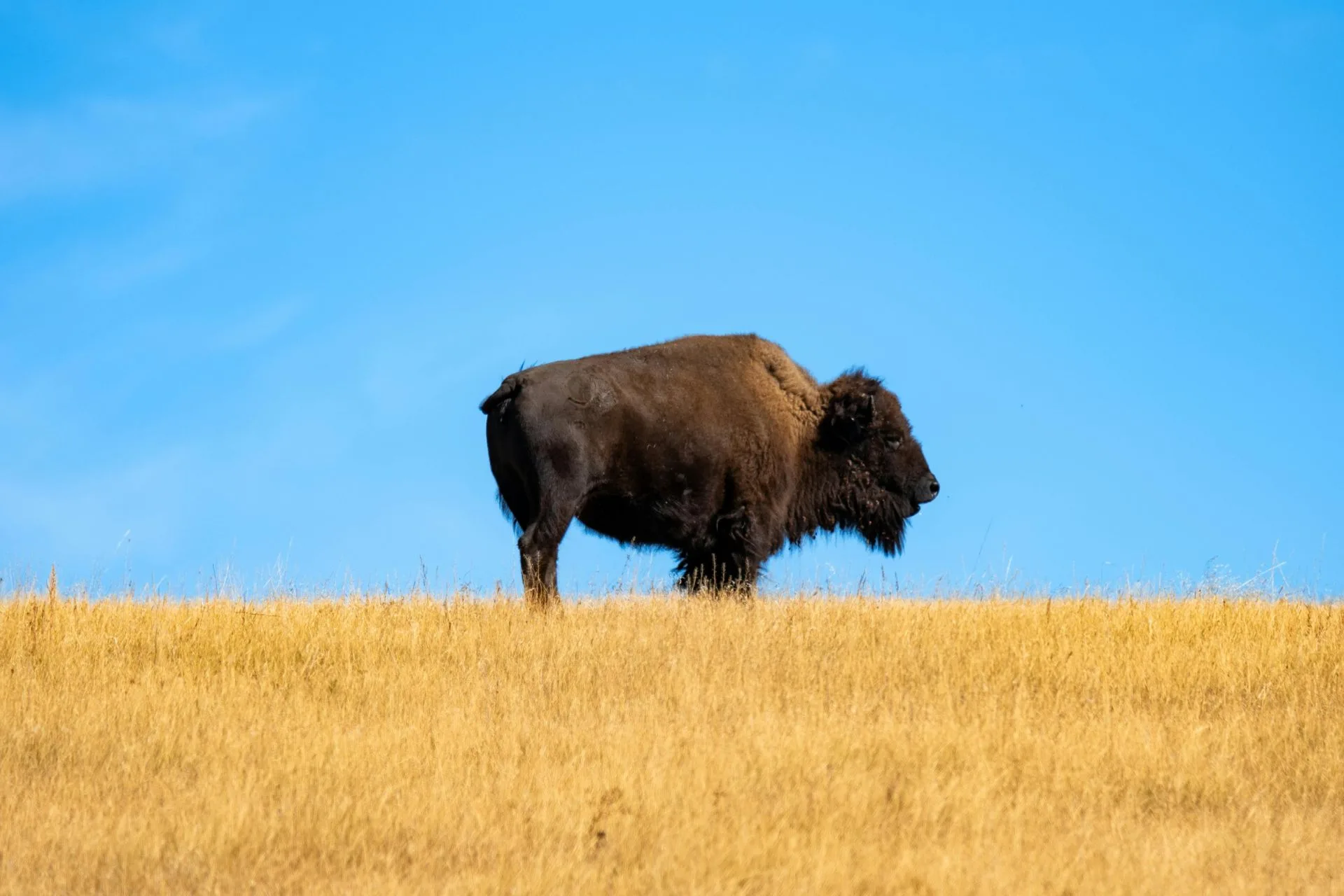by BRETT FRENCH | bfrench@billingsgazette.com
As Yellowstone National Park’s bison manager announced plans to capture 120 bison for its live transfer program this winter, a Nez Perce tribal representative criticized the agency’s trapping program for frustrating their treaty hunts.
“If you conduct the activities for the bison transfer program, that takes precedence over what I feel is a trust responsibility of Yellowstone National Park to ensure that we have some sort of harvest,” said Erik Holt, chairman of the Nez Perce Tribe Fish and Wildlife Commission.
Then during public comments, bison advocates chastised tribes for being “complicit” in killing bison.
“We want to see the bison migration patterns fully restored without a mass slaughter of bison at the park boundary,” said Clint Nagel, president of the Bozeman-based Gallatin Wildlife Association.
IBMP meeting
These differing opinions were expressed during an online meeting of the Interagency Bison Management Plan cooperators on Oct. 28, a mix of tribal, state and federal agency representatives.
With its bison population estimated at 5,300 as of August, Yellowstone bison manager Chris Geremia told the group park officials will “be using all tools to decrease” the herd this coming winter with trapping beginning as soon as possible.
For its live transfer program, Yellowstone captures bison near the park’s northern border at its Stephens Creek facility. Animals that test negative for exposure to brucellosis, a disease that can cause pregnant ungulates to abort, will be entered into the live transfer program. Those that test positive will be sent to slaughter with the meat provided to cooperating tribes, including the Confederated Salish & Kootenai, Northern Arapahoe and Northern Cheyenne.
To meet its goals for keeping the bison population between 3,500 to 6,000 animals, Geremia said the Park Service is recommending the removal of 700 to 1,300 bison this winter. The numbers are based on the estimated reproductive capability of the surviving bison.
“Seven hundred is not a target,” Geremia said. “Thirteen hundred is not a target. But we’re looking to remove somewhere in that range if the migration allows that.”
How to thin the herd
Tribal and state hunting is one way the Park Service meets its bison reduction goals. No hunting is allowed in Yellowstone and the area where bison can roam outside the park is limited by Montana, concentrating hunters.
Last year, 60 bison were shot in what’s called the western management area near Hebgen Lake compared to 17 in the northern management area in the Gardiner Basin where the Stephens Creek traps are located.
The Nez Perce accounted for the largest share, 33 bison, followed by the Shoshone-Bannock Tribes at 16 and the Blackfeet Nation at 10. State-licensed hunters killed only five bison, four of them from the north unit.
Meanwhile, the Park Service placed 97 live bison in its transfer program and shipped 768 to participating tribes for slaughter. Most of the captures took place between March 4 and April 4.
Last season the Park Service set a goal to remove 1,375 animals. Adding up all the bison killed by hunters, sent to slaughter, entered in the transfer program, one bull killed by the Department of Livestock after it wandered too far west and 11 killed near West Yellowstone in vehicle collisions shows 954 Yellowstone bison removed from the population.
Bison wise up to firing line
Holt said the park’s “aggressive trapping activities” place tribal hunters at a disadvantage.
Geremia said although the park captured animals, there were many more that were free to roam but few of them stepped across the park’s northern boundary line into confined areas where hunting is permitted.
“Those animals were allowed to move through, and they chose not to exit the park,” he said.
In the winter of 2022-23, which featured heavy snow and cold temperatures, Geremia noted tribal hunters were very successful, with more than 1,100 animals killed, 412 of which were taken by Nez Perce hunters.
In comparison, the park consigned 88 bison to slaughter that season, while 36 bison were wounded by hunters and died. In all, more than 1,500 bison were killed.
“I recognize it’s messy, and we need to continue to coordinate and work through the winter,” Geremia said. “How the migration presents will determine a lot of what we’re trying to talk to right now.”
The National Weather Service’s three-month outlook calls for above-normal precipitation for the Yellowstone region. The park had its first heavy snowfall last in late October, resulting in numerous vehicle slide-offs and a temporary closure of roads.
More live bison transfers
Geremia said about 137 bison currently being quarantined by the Park Service should be ready for live transfer this winter. The Animal Plant Health Inspection Service, which also quarantines bison, said this spring it would have 37 cow-calf pairs available for transfer in 2026.
“The park is open to working with other tribes that would like to participate in receiving and distribution of animals, whether that’s through assurance testing, running assurance testing facilities, or in other ways of … helping out with the program now,” Geremia said.
“We’re looking to work with tribes to … build resiliency and longevity into this program.”
Montana lawsuit
Yellowstone continues to operate under its newest Bison Management Plan, released in 2024. At the end of last year Gov. Greg Gianforte’s administration sued the Park Service to overturn the plan saying it wasn’t properly involved in its development. His administration would like the park to maintain a herd of only 3,000 bison to encourage the animals to stay inside the park.
Then in January, two Montana-based conservation groups sued the park arguing the plan still embraces capture and slaughter, which they called an “aggressive and controversial” way to manage the animals.
Both lawsuits seek reconsideration of the plan but Montana wants the decision completely canceled while the conservation groups do not.
A hearing was held in April on Montana’s suit. In September, U.S. District Court Judge Brian Morris granted Montana’s motion to combine the two lawsuits, given they have “substantially similar parties, facts, and legal issues,” but only for pretrial scheduling.



